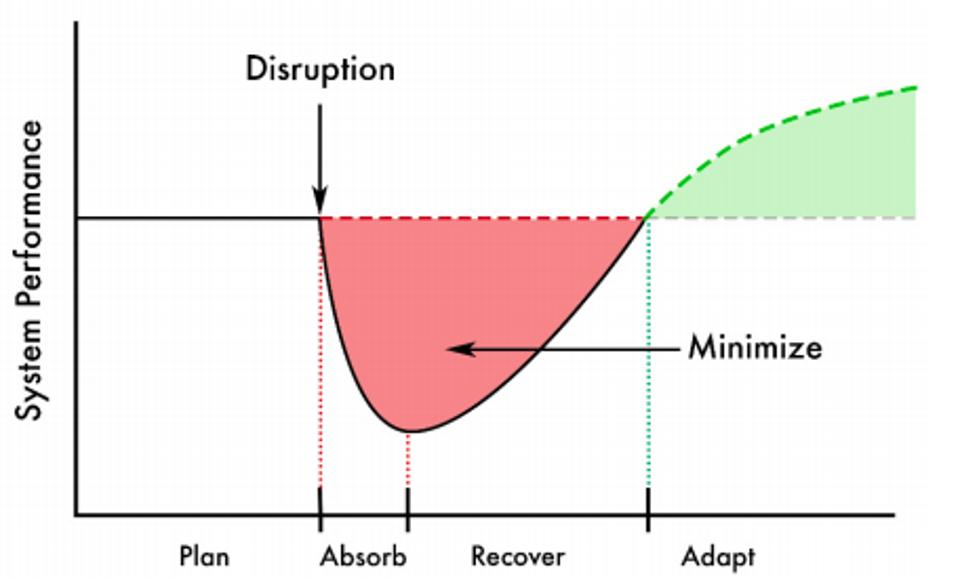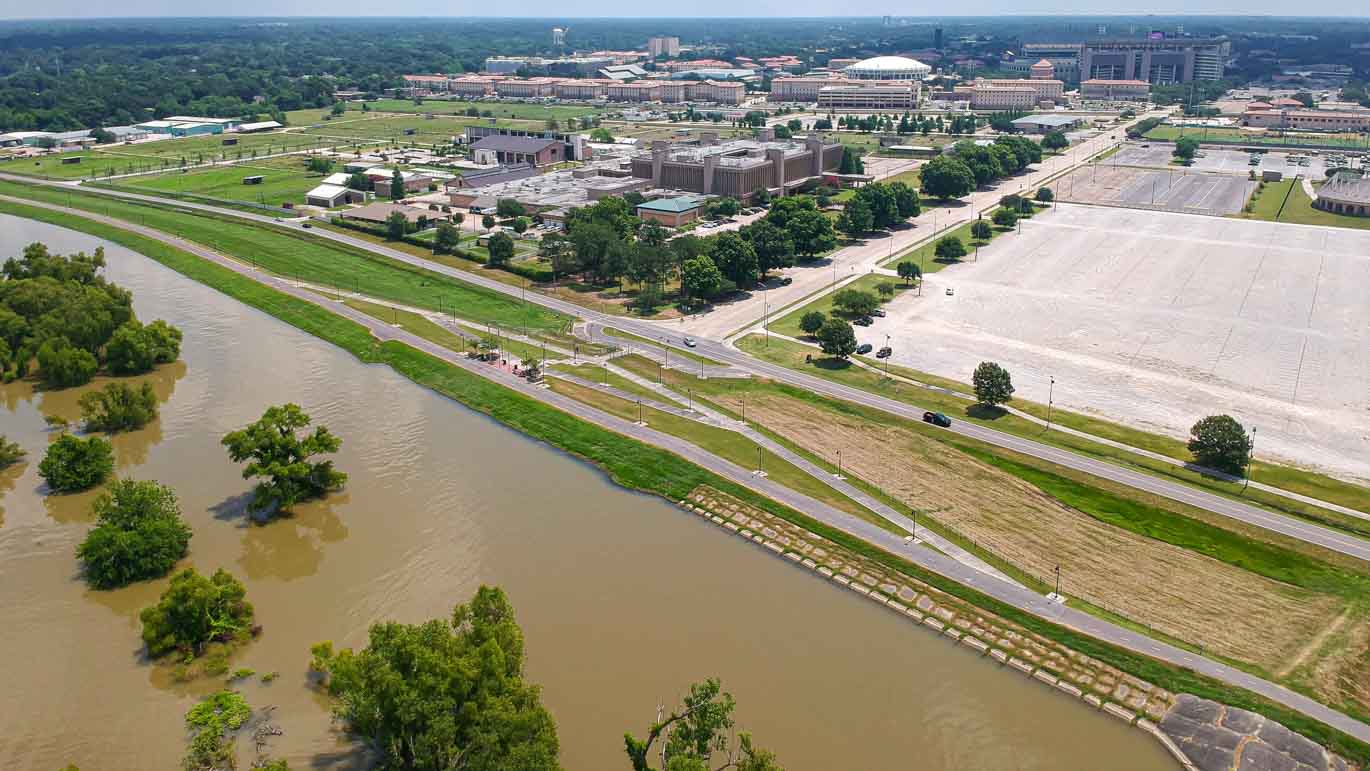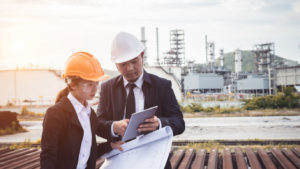Thomas Bostick was the 53rd Chief of Engineers of the United States Army and Commanding General of the U.S. Army Corps of Engineers. His extraordinary list of accomplishments includes multiple science and engineering degrees from the U.S. Military Academy, Stanford University, and George Washington University, along with extensive military education and more than three decades of exemplary service including time on the ground in Bosnia and Herzegovina, Iraq and within the Pentagon during 9/11. He is highly decorated, with more than a dozen honors to his name. He is the co-founder of Bostick Global Strategies and was the Chief Operating Officer and President of Intrexon Bioengineering.
Former U.S. Army Chief of Engineers Tom Bostick outlines a four-part systems approach to resilience, and how it can transform capital projects — and the teams that build them.
In times of crisis, people naturally question established thinking. Whether we find ourselves amidst a collective crisis or a substantial individual challenge, the questions we ask are often freighted with fear, anxiety, and confusion, and the process of finding answers is not easy. However, the inquisitive and resolute nature of human resilience allows us to forge ahead toward solutions for a better future.
In 1854, a devastating cholera outbreak in London prompted a physician named John Snow to question the widely held belief that particles in the air cause the deadly infection. Dr. Snow challenged centuries-old beliefs about disease and eventually identified germ-contaminated water as the primary cause of the disease. His discovery forever transformed how people build water systems. In a similar spirit, in the aftermath of Hurricane Katrina in 2005, we questioned why the levees failed, and we learned to build smarter and more effective defenses against rising rivers. Today, as the world struggles to contain the COVID-19 pandemic, we collectively question the necessity, safety, and the best practices of everything from healthcare and education to business practices and global travel. The answers we coalesce upon will determine what our world looks like in the years to come.
For those who commission and build capital projects, the question is this: How can we help a community and its people to become more resilient?
Thomas Bostick Tweet
For those who commission and build capital projects, the question is this: How does our built environment impact our collective ability to recover from crisis? In other words, how can we help a community and its people to become more resilient?
We must begin with resilient infrastructure, certainly. We also need resilient communications, resilient leadership, and resilient people. In the end, however, what we most need is a resilient system, because all of these — infrastructure, communications, leadership, and people — must work together. In this article, I’m going to introduce a systems approach to resilience that works for capital projects, communities, and individuals.
There are four phases to cover. Let’s get started.
Phase 1: Prepare
How can you prepare for a disruption that you know is going to come? Even if the timing or magnitude of the disruption is unknown, there are still several steps to effectively prepare our systems for the challenge ahead. Consider the threat that hurricanes pose to coastal cities. An individual can prepare physically and mentally for the coming crisis. A community can prepare by improving levees and coastal infrastructure. Leaders can prepare an emergency operations center to manage communications and other critical functions, and they can ensure that they’re raising the next group of leaders to take over day-to-day operations. Though much of the future is difficult to anticipate, the Prepare phase helps dampen some of the surprise that comes with a disruptive event and positions our system to better respond in the days, weeks, and even years ahead.
Phase 2: Absorb
Not every disruption can be prevented or avoided as we would hope with a risk-based approach. However, with resilience systems we must plan for some “give” in the system. The goal in Phase 2 is to bend but not break. Once disruption occurs, it will put pressure on all of the prepared resources. When a hurricane makes landfall, the levees will be tested, the emergency communications systems will be called upon to take appropriate actions to safeguard their families and communities. The goal of Phase 2 is to Absorb to the disruption in a manner that keeps the system functioning, and positions stakeholders on solid footing to successfully recover.
Phase 3: Recover
In Phase 3, the goal is to Recover from the crisis. After absorbing the disruption, it is now time to work toward a return to the baseline. In the case of a hurricane, this would include meeting food and water requirements, orchestrating cleanup, facilitating reconstruction and returning to homes and normal life. The effectiveness of recovery allows our broader system to strive toward its full range of services and functions, and subsequently allows stakeholders to consider necessary improvements for the future.
Phase 4: Adapt
You’ve survived the crisis, and now you enter Phase 4, during which you Adapt your systems to reflect what you learned during Phase 2 and Phase 3. Look at the critical failures in the system: Where did the water breach the levees? When did communications break down? Why did leadership fail? The military uses the After Action Review (AAR) to address the questions of what happened, why did it happen, and what do we do to prevent it from happening again. Bring the answers to these questions back to Phase 1 and begin preparing for the next crisis. To survive and thrive, every system must have a built-in capacity to improve and adapt, continuously increasing its overall value to stakeholders while developing characteristics that strengthen its resilience for a wide universe of other possible disruptions ahead. If Phase 4 is accomplished properly, you’ll be more resilient before the next disruption.

The Morganza Spillway: A Study in Resilient Infrastructure
The Great Mississippi Flood of 1927 was the most destructive river flood in US history, inundating 27,000 square miles and displacing hundreds of thousands of people. In the wake of the flood, the government charged the US Army Corps of Engineers with taming the Mississippi River, and they built the longest system of levees and floodways in the world, the Mississippi River and Tributaries (MR&T) System.
That system was built to withstand a 100-year flood, which mitigates most flood risk along the Mississippi River. But what happens when communities are struck with a 500-year flood? The likelihood of such an event is low, but the consequences and disruption would be grave. The Morganza Spillway, just one part of the overall MR&T system, was designed to help the levee system bend to accommodate a 500-year flood — but not break. The spillway allows us to intentionally flood one area to protect another.
In 2011, for the second time, the US Army Corps of Engineers opened Morganza Spillway, flooding the Atchafalaya Basin, and sparing both Baton Rouge and New Orleans from devastating floods. What we learned in 1927 made us more resilient nearly a century later. The US Congress appropriated millions to the US Army Corps of Engineers to recover and adapt the system to become even more resilient for the next disruption in the years ahead.
That is the power of a systems approach to resilience.
To learn more about resilience, risk mitigation and Predictability Thinking™, reach out to the Concord® team today.
The graphic in this article comes from Linkov, I., & Trump, B.D. (2019). The Science and Practice of Resilience. Springer, Amsterdam.






